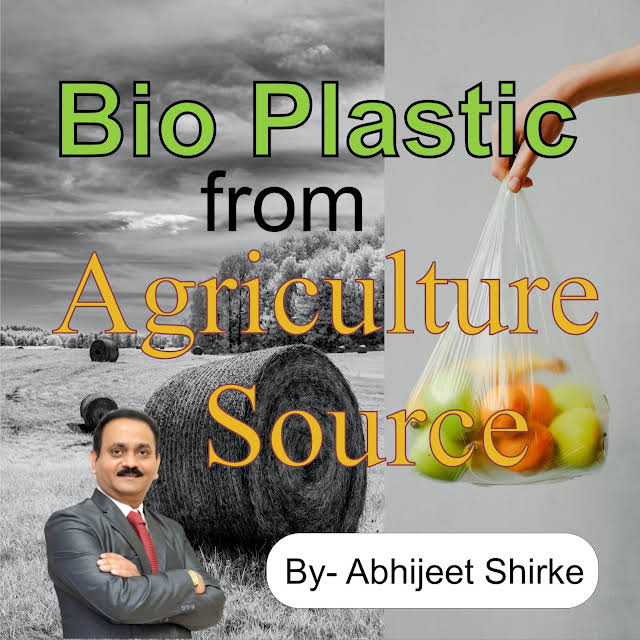
The production of bioplastic from agriculture sources is gaining momentum in India as a sustainable alternative to conventional plastics derived from fossil fuels. Bioplastics are made from renewable materials such as crops, agricultural waste, and biomass, offering several environmental benefits. Here’s an overview of the use of agriculture resources for bioplastic production in India:
Feedstock Availability
India is an agriculturally rich country with diverse range of crops and agricultural residues. These resources can be utilized bio plastics production, reducing the dependence on fossil fuel-based feed stocks. Examples of agriculture feed stock useful for bio plastics include corn starch, sugarcane bagasse, wheat straw, and potato starch.
Environmental Sustainability
Bioplastics derived from agricultural sources have a lower carbon footprint compare to conventional plastics. They are generally biodegradable or compostable, reducing the accumulation of plastic waste in landfills and oceans. By replacing conventional plastics with bioplastics, India can reduce plastic pollution and contribute to a more sustainable and circular economy.
Rural Development and Income Generation
Bioplastic production from agricultural resources can create economic opportunities in rural areas, where farming communities can benefit from cultivation of crops specifically for bioplastics or the utilization of agricultural waste. This can diversify income sources and contribute to rural development, particularly in regions with abundant agriculture resources .
Crop waste management
India faces challenges in managing agricultural waste effectively. By utilizing crop residues and waste materials for bioplastic production, the country can address the issue of agriculture waste management while simultaneously producing value-added products. This helps reduce the environmental impact of burning or improper disposal of agricultural residues.
Customizable properties
Bioplastics derived from agricultural resources can be engineered to possess specific properties suitable for various applications. They can be designed to be biodegradable, compostable, or have desired mechanical and barrier properties. This versatility makes them suitable for packaging materials, agricultural films, disposable cutlery, and other single-use plastic alternatives.
While promoting the use of agriculture resources for bioplastic production in India, the following actions can be taken:
Research and development
Investments in research and development are crucial to enhance the efficiency and properties of bioplastics derived from agricultural resources. This includes developing new bioplastic formulations, optimizing production processes, and exploring innovative applications.
Policy support
Government policies and regulations can encourage the adoption of bioplastics. Provide incentives for the use of agricultural resources for bioplastic production. This can include tax incentives, subsidies, and the establishment of standards and labeling systems for bioplastics.
Industry collaborations
Collaboration between the agriculture sector and plastics industry can drive innovation and commercialization of bioplastic technologies. Partnerships between farmers, researchers, and manufacturers can ensure a sustainable supply chain for agricultural feedstocks and support the growth of the bioplastics industry.
Consumer awareness
Educating consumers about the benefits and proper disposal of bioplastics is essential. Creating awareness campaigns and labeling systems can help consumers make informed choices and encourage the adoption of bioplastic products.
Utilizing agricultural resources for bioplastic production in India offers multiple benefits, including environmental sustainability, rural development, crop waste management, and customizable material properties. By promoting research, implementing supportive policies, fostering industry collaborations, and raising consumer awareness, India can contribute to the global transition towards more sustainable and Eco-friendly alternatives to conventional plastics.